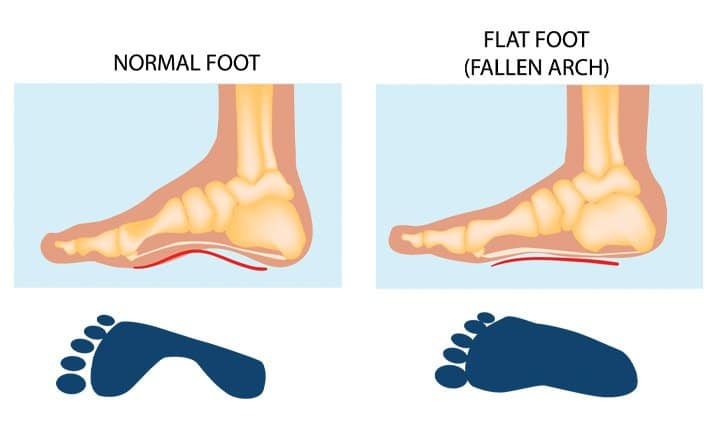Flatfeet
Flat feet, also known as fallen arches, is a common condition that affects both children and adults. It is characterized by the absence or flattening of the arches of the feet, which can cause discomfort and affect one’s ability to walk or stand for long periods of time. In this article, we will explore the causes, symptoms, and treatments for flat feet.
Causes: Flat feet can be caused by a variety of factors. In some cases, it is a hereditary condition that is passed down from generation to generation. In other cases, flat feet can be the result of an injury or overuse of the feet. Some medical conditions, such as arthritis or nerve problems, can also cause flat feet.
Symptoms: The symptoms of flat feet can vary from person to person. Some people may not experience any discomfort, while others may experience pain or swelling in the feet, ankles, or knees. Other symptoms may include difficulty standing for long periods of time, tired feet, or aching in the arches or heels.
Treatment: The treatment for flat feet depends on the severity of the condition and the symptoms experienced. In mild cases, flat feet may not require any treatment at all. However, for more severe cases, treatment options may include:
Orthotics: Custom-made shoe inserts, or orthotics, can be used to provide support to the arches of the feet and alleviate discomfort.
Physical therapy: Exercises can be used to strengthen the muscles in the feet and improve overall foot function.
Medications: Over-the-counter pain medications, such as ibuprofen, can be used to alleviate pain and inflammation.
Surgery: In rare cases, surgery may be required to correct the flat feet.
Prevention: While it may not be possible to prevent flat feet, there are steps that can be taken to reduce the risk of developing the condition. These include:
Maintaining a healthy weight: Excess weight can put additional strain on the feet and contribute to the development of flat feet.
Wearing appropriate footwear: Shoes that provide adequate support and cushioning can help reduce the risk of developing flat feet.
Stretching: Regular stretching can help improve foot flexibility and prevent the development of flat feet.
Avoiding high-impact activities: High-impact activities, such as running or jumping, can put additional strain on the feet and contribute to the development of flat feet.
In conclusion, flat feet is a common condition that can cause discomfort and affect one’s ability to walk or stand for long periods of time. If you are experiencing symptoms of flat feet, it is important to speak with a healthcare professional to determine the best course of treatment. With proper treatment and prevention measures, individuals with flat feet can lead healthy and active lifestyles.
If you would like to get seen by our board-certified foot and ankle specialists, click here


